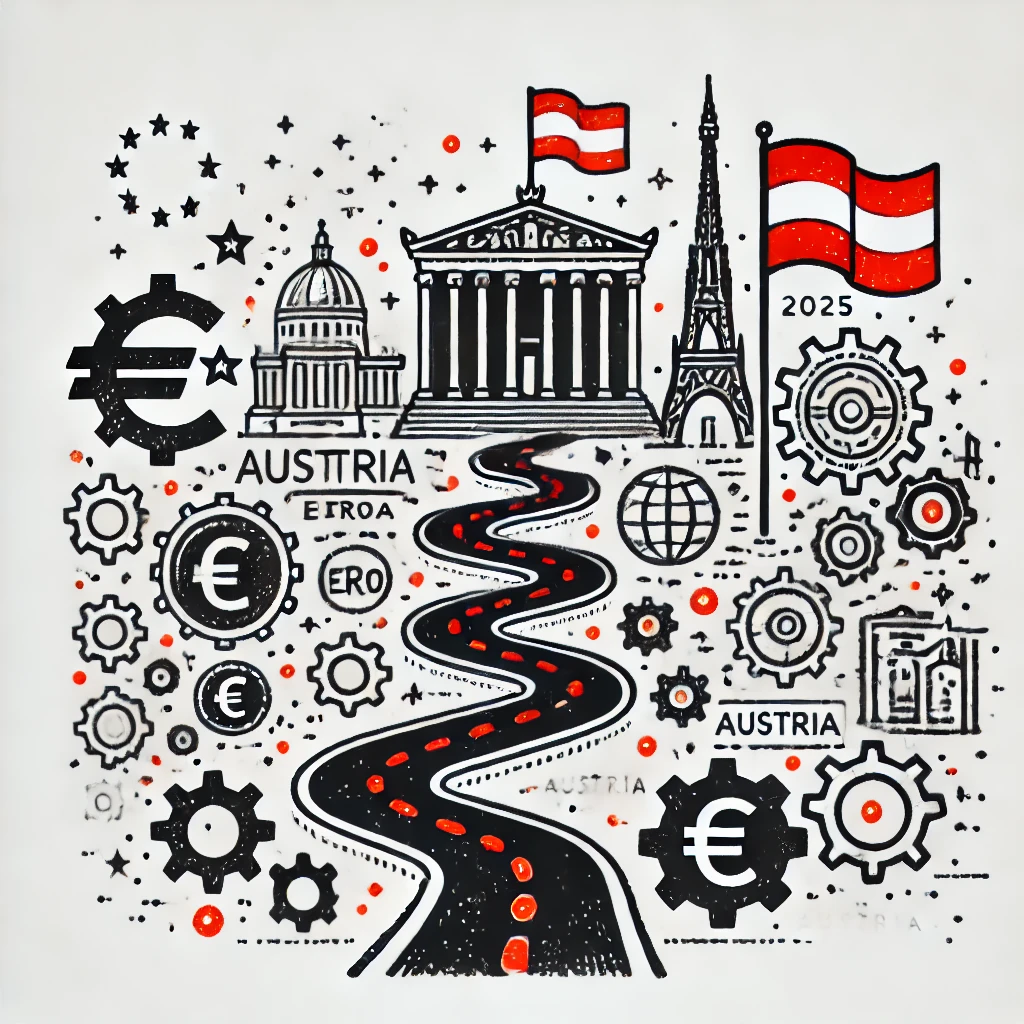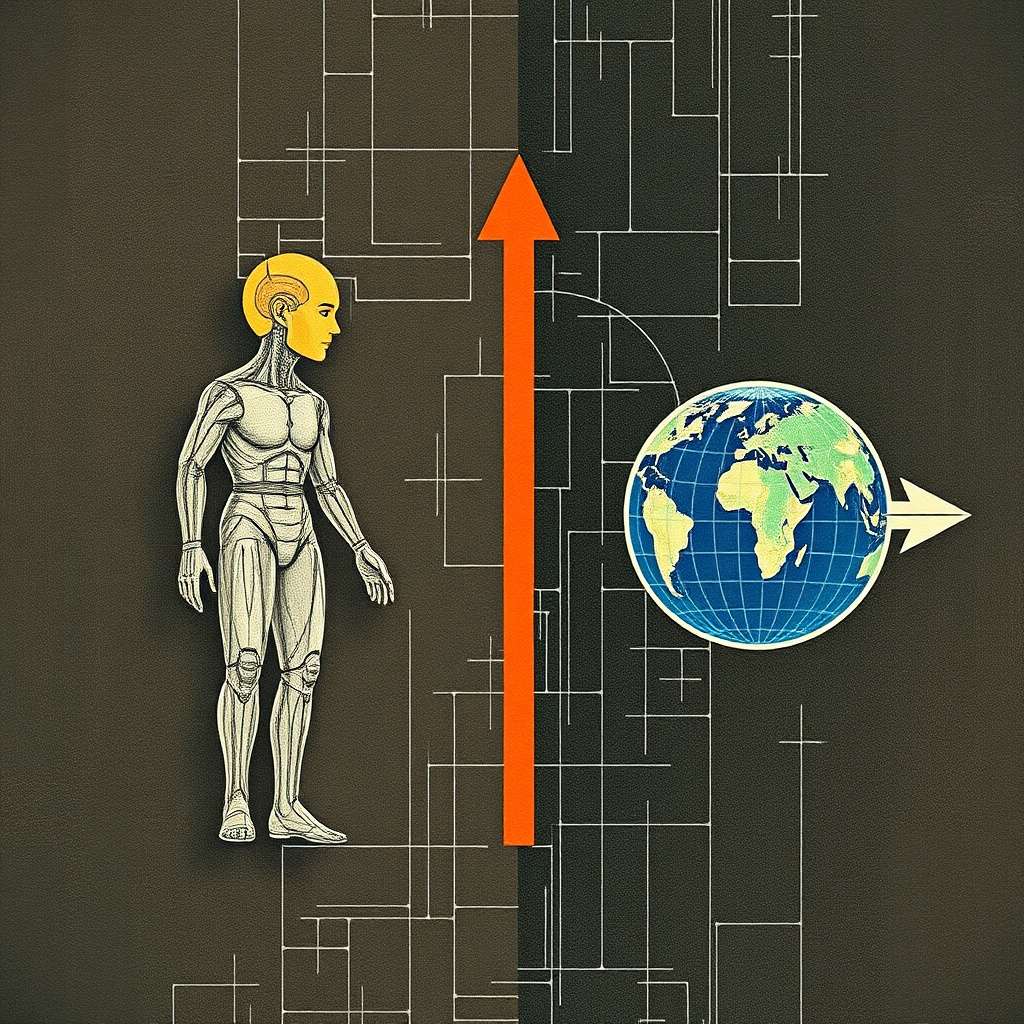Here’s a refined outlook for Austria’s “deep state”‑related corruption risks & governance in H1 and H2 of 2025, focusing specifically on areas highlighted amid and following the COVID‑19 era:
1. Current Corruption Landscape & Governance Reforms
- Corruption Perceptions Index (CPI) 2024: Austria scored 67/100, ranking 25th out of 180 countries—declining by 4 points compared to the previous year, signaling a mild deterioration in perceived integrity Transparency.org+1.
- OECD Anti‑Corruption and Integrity Outlook 2024: Austria’s National Anti‑Corruption Strategy (2023–2025) demonstrates strong strategic framework (67%) but weaker implementation (47%)—both above OECD averages (45% and 36%) OECD+1.
- Corruption Risk Forecast: Projects a stationary trend for Austria—no marked improvement or decline expected in the near term European Commission+9Korruptionsrisiko+9Korruptionsrisiko+9.
- Rule of Law Report 2025 (EU):
- 55% of businesses perceive corruption as widespread (vs EU average of 63%)
- 22% view corruption as a business obstacle (vs EU average of 35%)
- 55% believe prosecutions are effective deterrents (vs EU average of 36%) IMF+3European Commission+3Transparency.org+3.
2. COVID-19 and “Deep State” Corruption Dynamics
While there’s limited direct evidence tying COVID‑19 to “deep state” corruption in Austria, broader trends suggest vulnerabilities:
- A World Bank SOE Integrity Toolkit views crises like COVID‑19 as exacerbating governance risks in state‑owned enterprises—underscoring the need for transparency, board training, and integrity oversight ForviaWorld Bank.
- A Transparency International commentary describes Austria as among “Europe’s worst performers” in governance, urging bold implementation of transparency laws such as the Freedom of Information Act to protect public interest KNOETZL.
These point to lingering structural weaknesses—in oversight, accountability, and crisis management—that the pandemic may have intensified.
3. Key Recent Cases & Institutional Safeguards
- Karl‑Heinz Grasser scandal: Former finance minister sentenced in 2020 for corruption; in March 2025, the Austrian Supreme Court upheld his conviction but reduced the sentence to 4 years Wikipedia.
- Telekom Austria Affair: One of Austria’s largest corruption scandals (2011), involving state-linked telecom executives and political donations; although it’s from earlier years, it remains a historical benchmark in institutional risk assessment Wikipedia.
- BAK (Federal Anti‑Corruption Bureau): Austria’s key institutional mechanism for preventing and investigating corruption, reporting to the Interior Ministry and collaborating with EU bodies like OLAF and Europol IMF+9Wikipedia+9Wikipedia+9.
- International Anti‑Corruption Academy (IACA): Based in Austria, offering cross‑disciplinary education and capacity building in anti‑corruption, nurturing governance experts globally Wikipedia.
4. Outlook 2025: H1 vs H2
H1 2025 (January–June)
- Governance Stabilization: The new coalition government (ÖVP, SPÖ, NEOS) installed in March seeks to anchor public trust after political shifts in late‑2024 Wikipedia.
- Legal Continuity: Enforcement continues in major cases (Grasser appeal resolution), reinforcing judicial momentum.
- Strategic Planning: Anti‑corruption strategy continues toward its 2025 endpoint—but with limited public monitoring to date Wikipedia.
H2 2025 (July–December)
- Evaluation Phase: As the National Strategy wraps in 2025, expect emerging calls for evaluation and successor planning.
- External Reviews: Austria’s IMF Article IV (July 2025) highlights governance and anti‑corruption measures and suggests strengthening efforts against transnational corruption and foreign bribery IMF+1.
- Institutional Pressure: Rising scrutiny may invigorate institutional reforms for BAK, SOE oversight, and transparency legislation (e.g., FOI implementation).
- Civil Society Engagement: TI/EU surveys may pressure policymakers to act on business perceptions and enforcement gaps.
Outlook Summary Table
| Period | Outlook Highlights |
|---|---|
| H1 2025 | Political stabilization; continuation of anti-corruption agenda; judiciary resolves key cases; limited strategy monitoring. |
| H2 2025 | Strategy evaluation & planning; intensified focus on transnational corruption; institutional & FOI reforms; civil pressure on enforcement. |
Final Thoughts
Austria’s corruption risk trajectory in 2025 is cautiously stable—supported by structured strategies, institutional bodies, and judicial actions—but constrained by weak implementation. The mid–late 2025 phase is pivotal: it’s when evaluation, reform momentum, and adaptability—especially in the wake of COVID-19’s revealed vulnerabilities—can determine whether Austria shifts from perception to performance.
RapidKnowHow designs innovative political deep insight models that empower leaders to turn countries and institutions into leading powerhouses – Josef David
What is BAK activity?
The BAK is Austria’s Bundesamt zur Korruptionsprävention und Korruptionsbekämpfung (Federal Bureau of Anti-Corruption).
It was established in 2010 as the country’s specialized agency for preventing and investigating corruption. It sits within the Federal Ministry of the Interior but is legally independent in carrying out investigations.
🔎 Core Activities of BAK
- Investigations
- Handles serious corruption offenses involving public officials, police, and other state actors.
- Investigates bribery, abuse of office, fraud in public procurement, money laundering linked to corruption, and corruption within law enforcement.
- Prevention
- Runs training programs for civil servants and police officers on integrity, transparency, and compliance.
- Provides risk analyses in ministries, municipalities, and state-owned enterprises (SOEs).
- International Cooperation
- Austria’s main contact point for OLAF (EU Anti-Fraud Office), Europol, and Interpol on corruption matters.
- Works with GRECO (Council of Europe’s Group of States against Corruption) and UNODC.
- Whistleblower Protection
- Operates a secure whistleblower platform where citizens or officials can report corruption anonymously.
- Ensures reports are channeled to investigators without exposing identities.
- Data & Strategy
- Collects intelligence on corruption trends and feeds into Austria’s National Anti-Corruption Strategy (2023–2025).
- Publishes reports and statistics (often in collaboration with Transparency International).
📌 Example Activities (Recent Years)
- COVID-19 procurement oversight: monitored misuse of emergency funds and contracts during the pandemic.
- Police corruption cases: investigated bribery and abuse of power within law enforcement.
- Training rollouts: integrity workshops across ministries, municipalities, and SOEs.
- International cases: cooperation with EU partners on cross-border bribery and fraud investigations.
👉 In short: BAK activity = investigations, prevention, training, and cooperation—all targeted at reducing corruption risk in Austria’s public sector and its interaction with business and international partners.
Compare BAK task with the actual result 2020-2025
Here’s a clear comparison between BAK’s official tasks and its actual performance from 2020 to 2025:
BAK’s Mandated Tasks
Based on organizational documents, BAK’s core mandates include:
- Investigations & Operations: Handle corruption and abuse-of-office investigations across public and private sectors. This includes exclusive and extended jurisdiction cases. It also includes internal complaints, such as allegations of mistreatment by police. Wikipedia+7bak.gv.at+7bak.gv.at+7
- Prevention & Training: Conduct awareness campaigns, lectures, training programs (including e-learning modules) for public servants, police, and administrators. bak.gv.at
- International Cooperation: Collaborate with EU and global bodies (GRECO, OECD networks, OLAF, Interpol), host and participate in exchange visits. bmj.gv.at+7bak.gv.at+7Wikipedia+7
- Support for National Strategy: Play a central role in developing, implementing, and monitoring Austria’s National Anti‑Corruption Strategy (2023–2025), including the Action Plan. European Commission+4bak.gv.at+4OECD+4
Actual Outcomes (2020–2025)
1. Resilience During COVID-19 (2020–2021)
- The pandemic disrupted many institutions. Corruption investigations continued without interruption, but prevention and training activities were largely paused or limited. BAK’s 2022 report notes restrictions during these years. OECD+13bak.gv.at+13bak.gv.at+13
2. Recovery and Expansion (2022)
- By 2022, BAK had fully resumed its prevention programs:
- Conducted 144 lecture events, totaling 867 lecture hours, reaching 3,910 participants.
- Continued online training through the e‑learning module on civil‑service conduct.
- Resumed in-person events and courses like the “27th BAK advanced training course.” bak.gv.at+1
3. Support for National Strategy (2023–2025)
- In October 2023, Austria’s National Anti‑Corruption Strategy and Action Plan (2023–2025) were formally adopted—with BAK deeply involved in their design. Indicators, coordinator roles, and self-monitoring mechanisms were defined. bak.gv.atOECD
- June 2025 marked the planned first evaluation of Action Plan measures. bak.gv.at+1
4. Enforcement Outcomes (2023–2024)
- According to the 2025 EU Rule of Law Report:
- BAK detected 83 potential corruption cases in 2024 (up from 66 in 2023).
- Also recorded 769 cases of abuse of official authority (up from 688 in 2023).
- In December 2024, BAK staffing rose to 174 employees, up from 161 in 2023. globenetwork.unodc.org+8European Commission+8bak.gv.at+8
5. Enhanced International Engagement (2022–2025)
- BAK hosted and collaborated with various international delegations, including from Mexico, Czech Republic, Jordan, Korea, the Philippines, and Vietnam. It also provided input in EU-level platforms like EPAC, EACN, GRECO, and the EU Rule of Law cycle. bak.gv.at
Summary Table: Mandate vs Results
| BAK Mandates | Performance 2020–2025 |
|---|---|
| Investigations | Consistent work; increasing detection: 66 → 83 corruption cases, 688 → 769 abuse cases (2023 → 2024). |
| Prevention & Training | Severely disrupted in 2020–21; fully resumed in 2022 with high engagement and e-learning integration. |
| Support to NACS & Action Plan | Proactively involved in policy design (2023). First evaluation underway (2025). |
| International Cooperation | Actively hosted study visits and engaged in EU/global networks through 2025. |
| Staffing & Resources | Expanded workforce: 161 → 174 employees (2023 → 2024). |
Key Takeaways
- Strong recovery post-pandemic: BAK swiftly restored its core prevention activities while maintaining investigative continuity during COVID-19.
- Growing enforcement footprint: An uptick in case detection suggests increased capacity or willingness to act.
- Strategic integration: BAK’s central role in developing and evaluating Austria’s anti-corruption strategy reflects solid institutional consolidation.
- International leadership: Ongoing cooperation positions Austria as a key player in anti-corruption networks.
- Enhanced resources: Staffing growth underscores increasing institutional investment.
Diving deeper into the Covid – COFAG Case and compare BAK to Peers in Europe
Deep dive into the COFAG (COVID‑19 Federal Financing Agency) case in Austria, highlighting how its handling of COVID‑19 aid measures reflects on the performance of the BAK (Federal Bureau of Anti‑Corruption)—and how BAK compares to its peers in Europe. Here’s what we know:
COFAG: What Went Wrong?
COFAG was created in March 2020, under emergency legislation, to manage billions in COVID-19 aid (grants, loans, guarantees) to Austrian businesses—eventually disbursing around €17 billion by July 2022 Wikipedia+1. The agency was set up rapidly and outside usual administrative structures, with minimal documentation and unclear decision-making processes Wikipedia+1Der Rechnungshof.
Key Issues Identified:
- Institutional Design Flaws: Established overnight by the Ministry of Finance as a private-law GmbH, COFAG lacked proper legislative groundwork and rationale. Its governance included politically appointed managers Wikipedia+2Der Rechnungshof+2.
- Transparent Oversight Missing: Debated heavily as a “black box” — opposition parties demanded parliamentary oversight, which was refused; they called for a budget subcommittee, later taken up by a formal inquiry Wikipedia+1.
- Economically and Legally Questionable Practices:
- The Austrian Court of Audit flagged “considerable overfunding risks” for subsidies like the fixed cost grant and turnover compensation—often dispensed without proof of actual losses and lacking control of group-wide claims OeNBOeNB.
- COFAG reportedly incurred upwards of €21 million in consultant fees, used dysfunctional staffing approaches, and offered meager documentation—prompting the Court of Audit to recommend its dissolution Der Rechnungshof+1.
- Constitutional Ruling & Dissolution:
- The Constitutional Court (VfGH) deemed COFAG’s setup partly unconstitutional, prompting requirements for dissolution by end of 2024—with actual winding-up beginning mid‑2024 Der Rechnungshof+3Wikipedia+3Wolf Theiss – Leading Lawyers in CEE&SEE+3.
- The Parliamentary Investigative Committee’s 2024 report reiterated the criticisms: COFAG was inefficient, costlier than using existing administrative structures, and disproportionately benefited large firms using multiple shell entities, though no concrete political corruption was proven Wikipedia.
What Was BAK’s Role—And Performance?
The BAK is Austria’s specialized federal body for probing corruption, abuse of office, bribery, and related offenses Der Rechnungshof+5bak.gv.at+5commission.europa.eu+5. However, there’s no public evidence that BAK directly investigated COFAG—likely because COFAG’s issues were largely administrative, constitutional, or financial irregularities, rather than clear-cut criminal corruption such as bribery.
Instead, COFAG was reviewed by the Court of Audit and examined by legal and parliamentary inquiries—not BAK’s investigative mechanisms.
This reflects a boundary in Austria’s anti-corruption architecture:
- BAK’s mandate is focused on criminal offenses—bribery, official corruption, and misuse of authority—not on evaluating public spending design or administrative systems.
- Systemic financial or constitutional failures are handled through audit bodies (Rechnungshof), legal validation (VfGH), and oversight committees, rather than criminal investigation by BAK.
How Does BAK Compare to European Peers?
Austria’s BAK plays a solid, specialized role—but compared to some European counterparts, it has a narrower scope and limited financial oversight function.
European Models:
- France’s Anti‑Corruption Agency (AFA): Investigates corruption and oversees the integrity frameworks of public administrations and companies—conducting systematic audits and compliance reviews.
- Italy’s ANAC: Combines anti-corruption enforcement with broad preventive mandates—monitoring public procurement, transparency, and integrity.
- UK’s National Crime Agency (NCA): While criminally focused, it works closely with financial oversight bodies and can tackle misappropriation of emergency funds via financial crime pathways.
BAK’s Strengths:
- Focused expertise in criminal investigations and international collaboration (OLAF, Europol, etc.) Wikipedia+2Der Rechnungshof+2bak.gv.at.
- Steady growth: Rising case numbers and expanded staffing over the years commission.europa.eu+1.
BAK’s Limitations:
- Limited in preventive financial oversight: Unlike peers, BAK doesn’t conduct finance audits or monitor agencies like COFAG.
- Reactive structure: BAK intervenes when criminal corruption is suspected—but systemic legal or administrative irregularities often evade its remit.
Summary Table
| Aspect | COFAG Case Scenario | BAK vs Peers |
|---|---|---|
| Mandate Coverage | Administrative setup fails; Court audits it; no BAK role | BAK focuses on criminal corruption—not finance systems |
| Institutional Response | Court of Audit, VfGH, Parliamentary Inquiries took charge | Other countries’ anti-corruption bodies address both oversight & enforcement |
| Effectiveness | Mismanagement exposed post-factum | BAK has strong enforcement record—but lacks preventative oversight |
| Comparative Gap | No BAK action, even despite billions disbursed | In many peers, similar institutions would audit compliance and disbursement logic |
Final Reflection
The COFAG case underscores a crucial weakness: Austria’s corruption architecture lacks a unified body that addresses both integrity enforcement and oversight of emergency public spending. BAK is strong in prosecuting criminal cases—but COFAG’s issues fell through the cracks.
RapidKnowHow designs innovative political deep insight models that empower leaders to turn countries and institutions into leading powerhouses – Josef David




